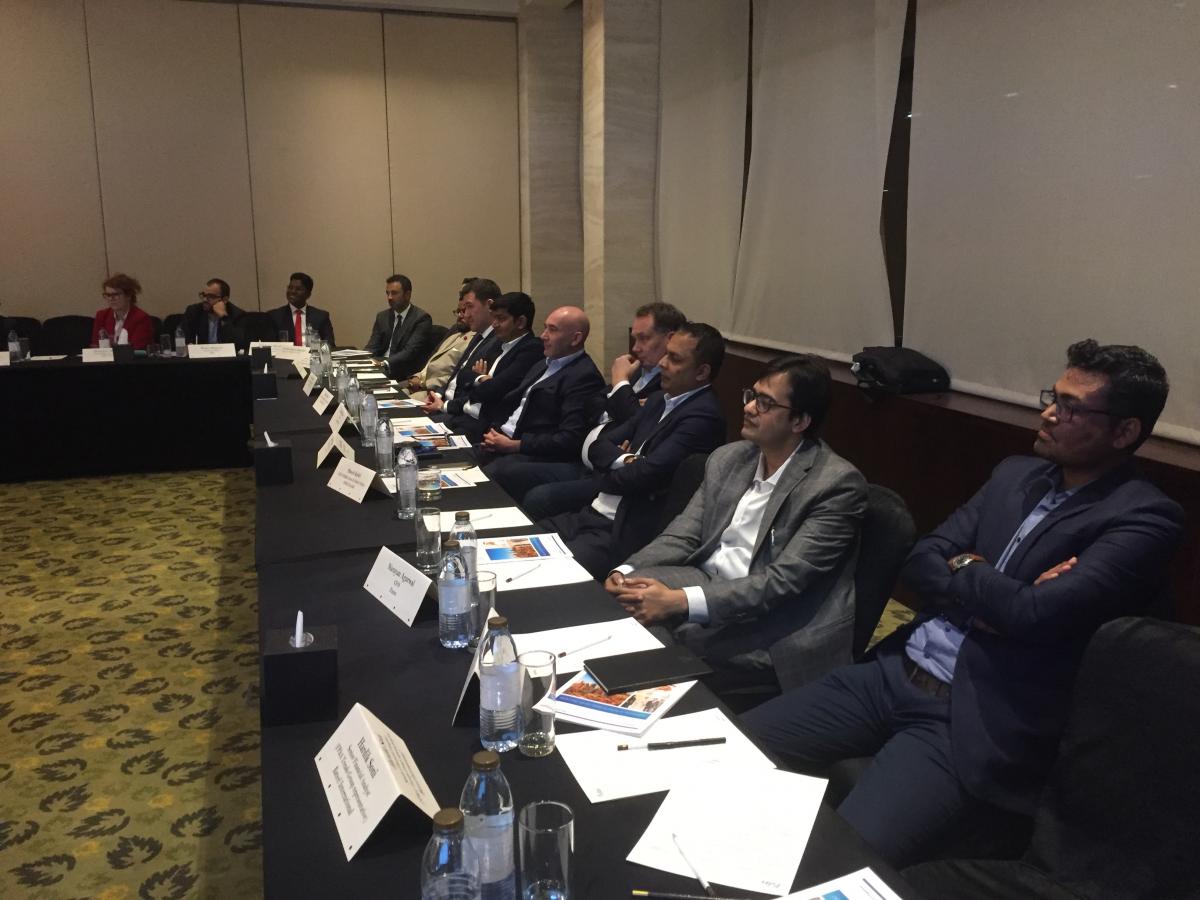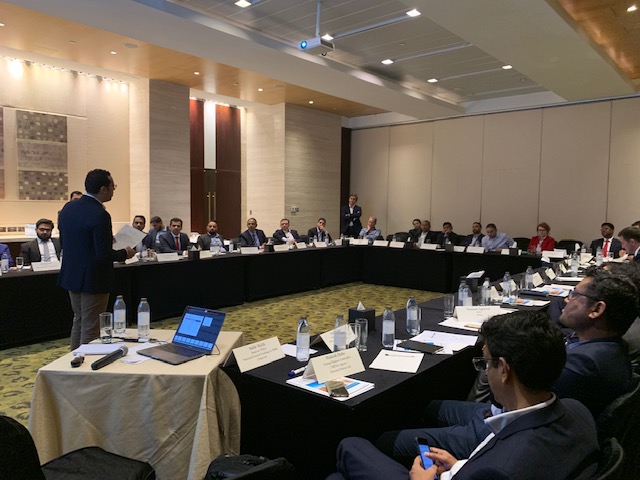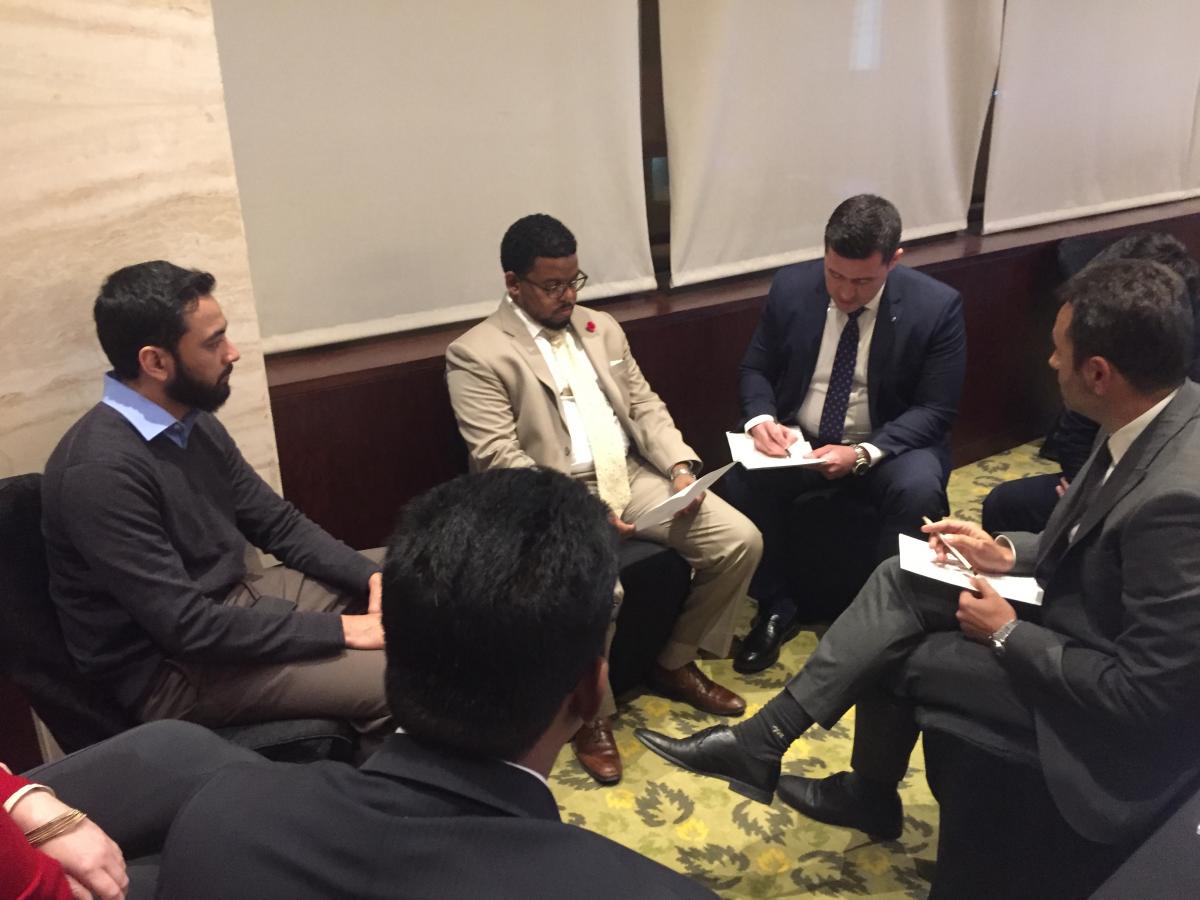 The International FP&A Board held a meeting in Dubai on 6th February in the wonderful H-Hotel in Sheikh Zayed Road. The topic of the discussion was “Rolling Forecast: 7 Factors for Success”.
The International FP&A Board held a meeting in Dubai on 6th February in the wonderful H-Hotel in Sheikh Zayed Road. The topic of the discussion was “Rolling Forecast: 7 Factors for Success”.
At the beginning of the meeting, there was a quick survey about Rolling Forecasts and whether the Board members are satisfied with them or not. It was good to note that more than 50% of the members introduced rolling forecast in their business. Nevertheless, only 10 to 15% of them are satisfied with the results.
Several challenges were identified at the meeting such as driver-based forecasting, accuracy, people involvement in implementing the forecast. Most of the companies follow the Hockey stick forecast model where bottom lines are shown growing whereas the history is in a declining phase.
The existing forecasting process has some limitations. Therefore, a new concept of rolling forecast was introduced. Rolling forecast gives more accurate results compared to the traditional forecast. It is also more flexible and helps in quicker decision making. This results in improving the corporate vision in a long run.
Seven Key Factors
At the meeting, the Board members identified seven key factors for successful implementation of Rolling forecast:
- Culture: Rolling forecast (RF) is a management tool which involves every division of the organisation. It challenges the traditional culture and improves the mindset of the people.
- People: For a successful RF implementation, the organisation needs the right people from all departments. It is collective efforts and not an individual one. At the meeting, the importance of the human factor was explained by Vidya Venkateswaran, Managing partner at Vecta Strategy, former CFO at Etihad Airways. To put it simply, RF is “about narrowing variation of how much we are going to go wrong”. Most of the business managers / operation managers see RF as a budgeting tool and link it with the target and annual performance incentive. They also see it as a painful budgeting process. Finance plays a key role in RF. As explained by Vidya, RF must be non-biased as most of the operation forecast will be optimised. Finance professionals need to go away from targets setting or management incentive and rewards and get back to a true and honest opinion about the future. RF is a management tool. It is not a measuring tool for performance.
- Systems: RF should be built inside the organisation. It should be managed by finance instead of IT. Around 80% of all organisations continue to use Excel for RF, but Excel is prone to mistakes and can be one of the reasons why a rolling forecast is still not successful.
- Process: Good quality RF should be driver-based and should be backed by clear assumptions. Processes should be quick, flexible and allow for collaboration while minimising non-value adding activities.
- Design: Depending on systems and processes, the frequency can vary in different industries. Based on the Hackett Group research, the airline industry is rolling 2 quarters per month whereas the semiconductors industry is rolling 2 quarters twice per quarter.
- Integration: The integration of different processes of the company through drivers and through the system can be possible only when different business partners participate in implementing RF. Both top-down and bottom-up processes should be aligned for successful integration.
- Participation: The forecasting process involves many different people; both finance and non-finance professionals. It is up to FP&A practitioners to be business partners and teach non-finance colleagues what drivers and systems to use. There is a gap between strategy and execution at many organisations. Involving many departments in the planning process can help to overcome this problem. However, while participation is important, FP&A professionals must also make sure that the process does not become too crowded.

After the discussion of the abovementioned factors, Darrel Edon, CFO at Gourmet Gulf, presented insights from his professional experience. Previously, Darrel worked at Alhokair Retail and Premier Foods. At the FP&A Board meeting, he described the challenges he faced while moving from traditional budgeting to rolling forecast. For example, he encountered resistance from management and experienced a lack of proper tools and the right people.
According to Darrel, when companies decide to start using rolling forecasts, they face a few additional challenges. Rolling forecasts can cost time and money if the forecast process is not automated. Relying on accountants will just increase their workload if they are doing constant forecasting like a number-crunching exercise without any business value.
FP&A Analytics Maturity and Rolling Forecast Maturity Models
After the presentations, the FP&A Board members also discussed 3 states of FP&A Analytics Maturity model. The stages of maturity could be described as following:
1. Basic State includes no formal analytical processes, no established analytical matrixes and business drivers. The financial model is in the basic or non-existent state.
2. Developing Stage of Maturity includes inconsistent planning and forecasting processes with basic analytical matrixes and basic planning model and tools (most likely excel-based).
3. Defined Stage of Maturity includes defined planning processes, defined analytical matrixes and defined planning model and system. This is an intermediate state of the analytical transformation. At this stage, the processes are stable but not “best in class”, they are adequate for the traditional budgeting, planning and forecasting process.
4. Advanced Stage of Maturity. This stage includes enterprise-wide planning processes, leading KPI’s and business drivers and driver-based planning process and flexible planning system
5. Leading Stage of Maturity. The final aim of the organisation is to achieve an integrated driver-based planning process (both horizontal and vertical). At this stage, the planning system is fully integrated with BI, real-time collaborative planning process and advanced analytics

After discussing the FP&A Maturity model we went through the rolling forecast stages:
- The initial stage of RF is characterised by a static process and it is neither driver-based nor flexible or dynamic.
- At the intermediate stage, the model is partly based on drivers and has already moved away from the too detailed approach of the basic stage. Static planning systems are still partly in use and it is not easy to generate fast-paced rolling forecasts on demand and to model different scenarios with ease.
- Finally, at the leading stage, agile and prompt forecasting and planning are achieved.
Small Group Discussions
FP&A Board members also participated in small group discussions where they were divided into 4 groups. The first two groups discussed an analytical aspect of the Rolling Forecast. The other two groups discussed the human and cultural aspects of the Rolling Forecast.
According to Group 1 and Group 2, the advanced state of forecasting consists of low levels of details. It is important to differentiate noise from key business drivers which should be connected to results. Assumptions regarding forecasting should be centralised and cascaded down. All participants involved in rolling forecast should have a good understanding of the business. There should be a defined framework and SOP for rolling forecast. Finally, it is equally important to challenge assumption to avoid bias in data collection.

Group 3 and 4 focused on the human and cultural aspects. Their conclusion was that in order to succeed, it is important to have the right people. FP&A staff should not be just post-office type employees with their main aim of delivering reports. There should be a certain level of empowerment where the team can challenge the business on forecast results. Other important aspects mentioned by the Board members were communication and having the right mix of people in the team.
Conclusions from the meeting
Rolling forecasts expands on planning horizons, reduces planning cycles, and helps in executing organizational strategies.
Companies will realize their full potential only if they are ready to change. If RF is not implemented with careful planning, then it will be an expensive time-waster without any benefits to the organisation.
There should be a specific focus on the process of transitioning smoothly from traditional budgeting to forecasting by looking specifically on key business drivers. Target setting should not be mixed with forecasting. In successful RF implementation, culture plays a major role: it is vital to have collaboration across departments.
We are very grateful to our partners and sponsors – Jedox and Michael Page






